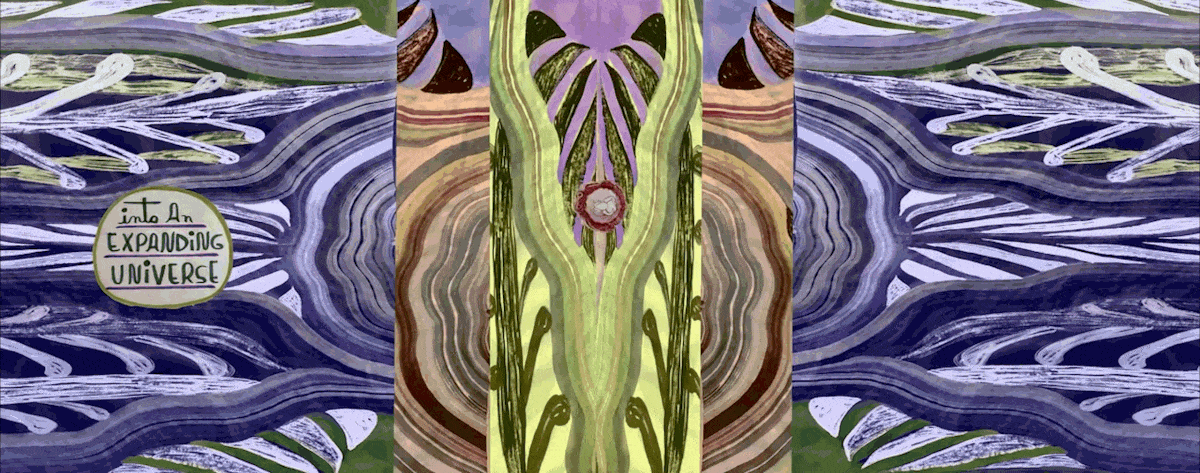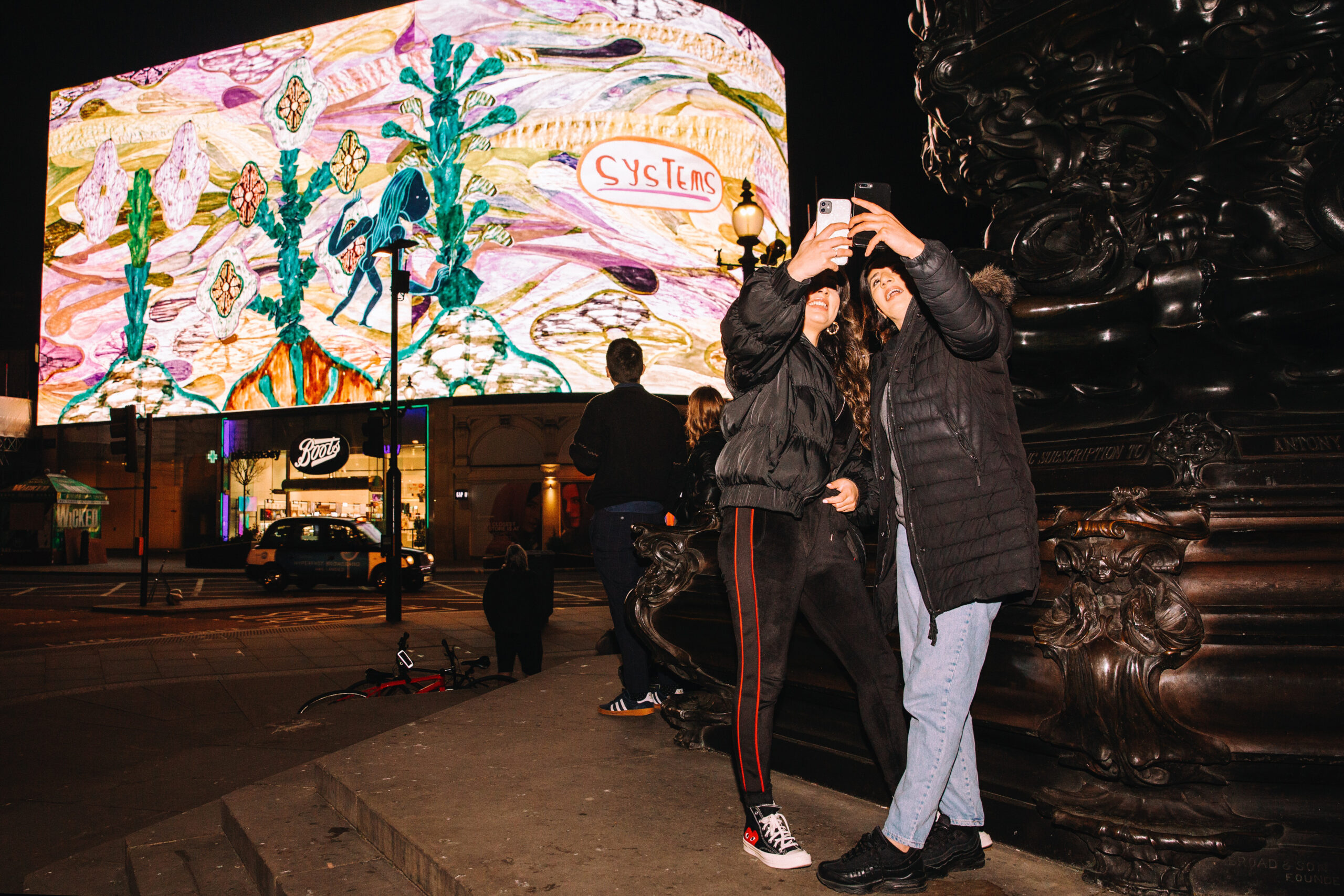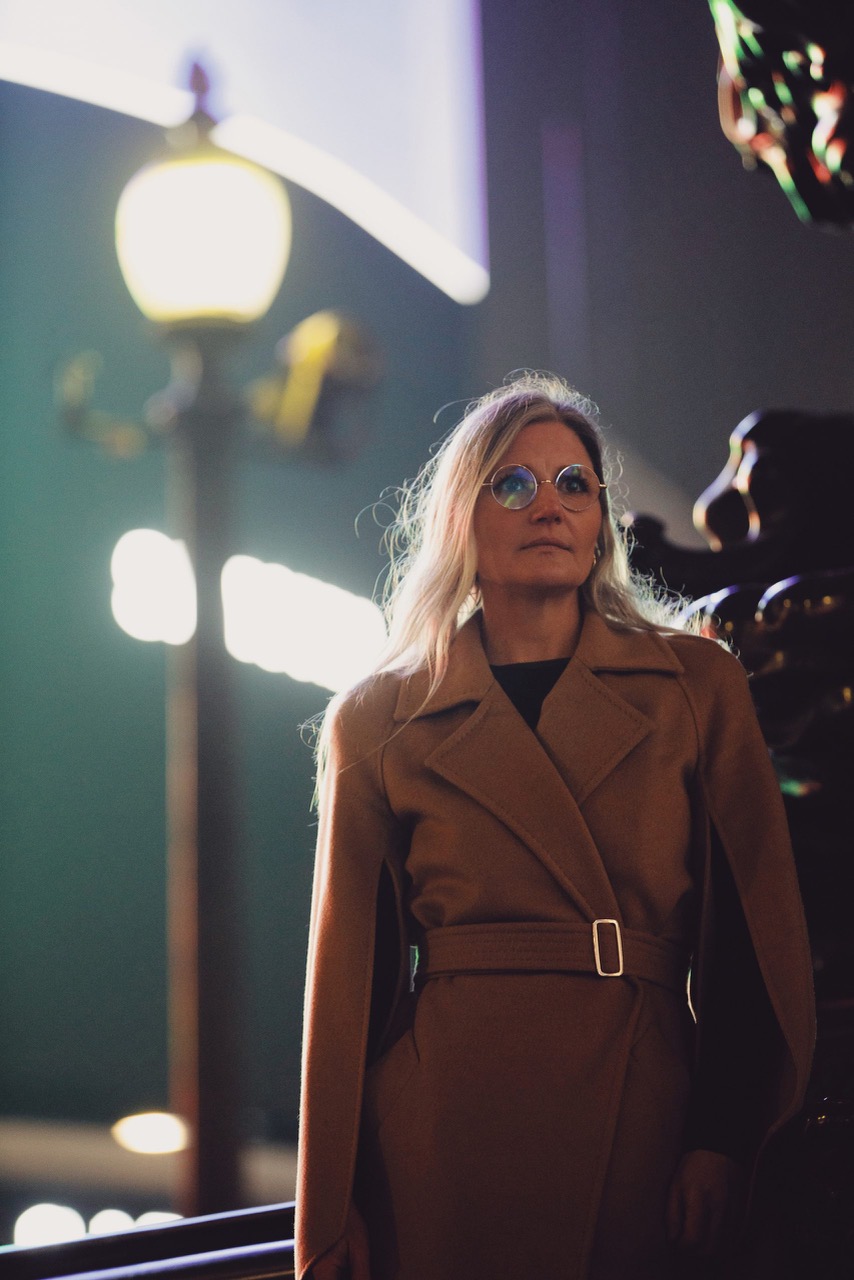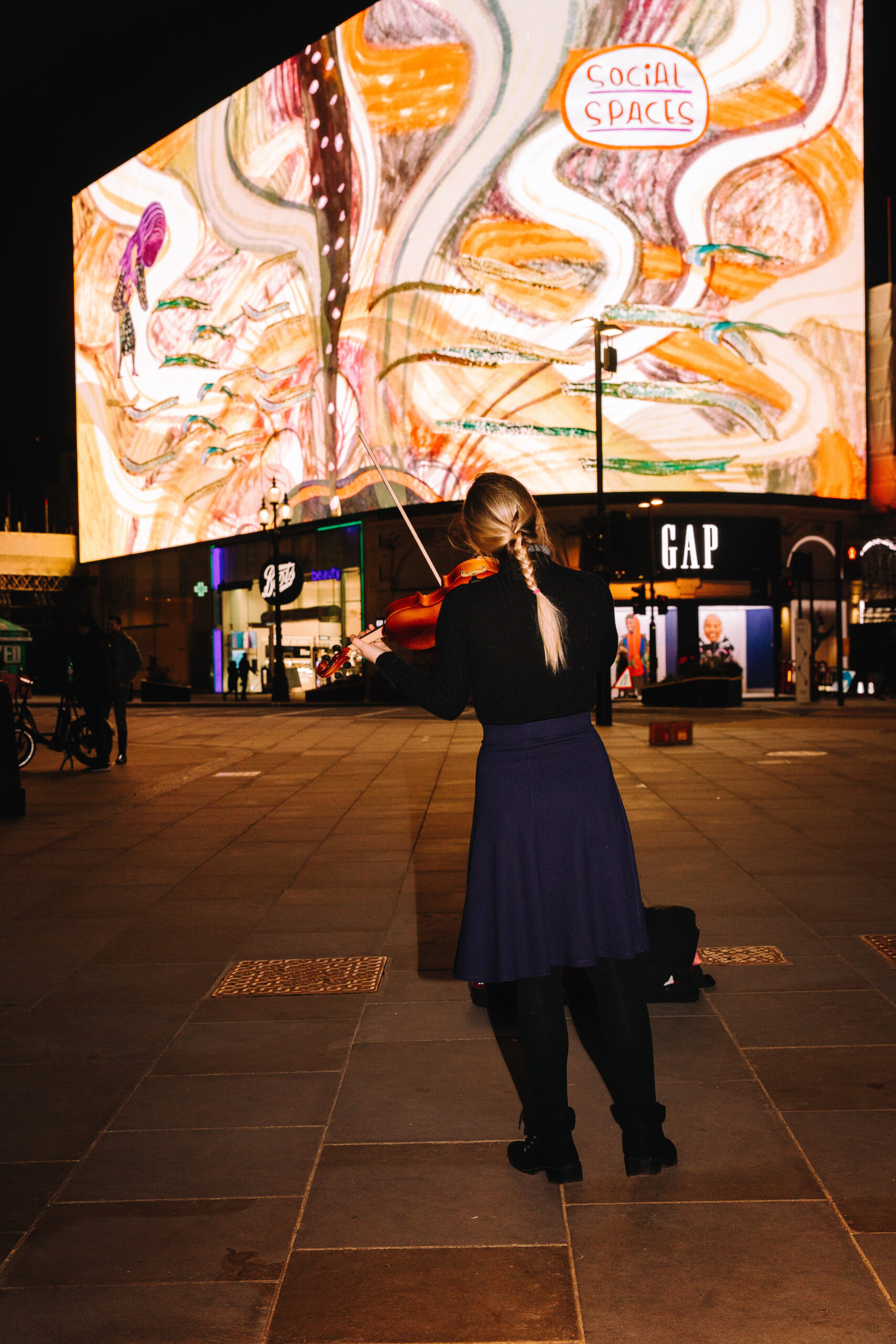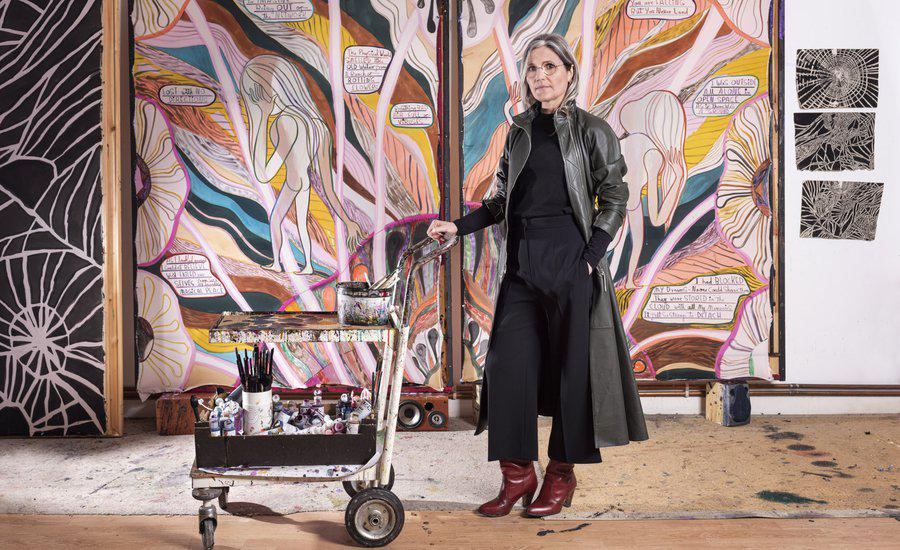Ouroboros Time in the Universe of Emma Talbot
Written by Louisa Elderton
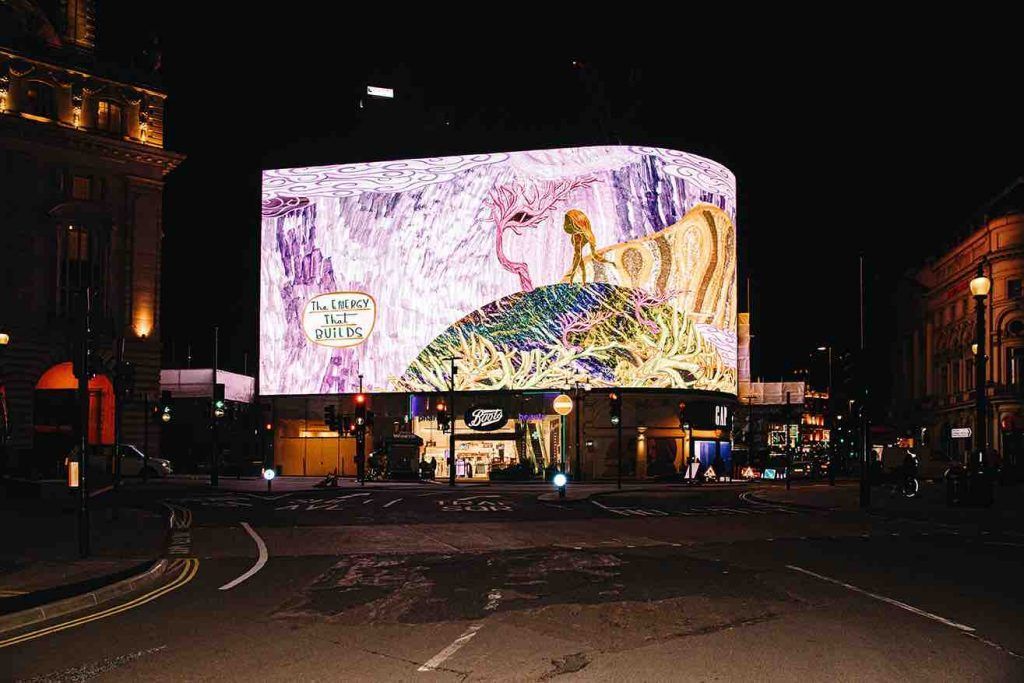
What may your vision for a hopeful future look like? How to explicate the way the world could be? How to harness time; fold it, elongate it, compress it according to the shapes that you want to see? And how may your body move in relation to these shapes, with skin that wants to feel? As depicted by the British artist Emma Talbot’s work, fingertips curl into themselves if there is no one else to touch. Plant tendrils coil as they climb, spiralling, stretching for support. Galaxies assiduously swirl, systems of stars, dust and dark matter that are gravitationally bound and yet celestial. There are infinite such layers that constitute our universe, but what else could our world be? Or rather, how else could it function?
Talbot’s series of four animations for CIRCA, Four Visions For a Hopeful Future (all works 2021), conjures such questions. Of a post-viral world that needs re-birthing. Known for her drawings, paintings and sculptures that combine word and image to narrate the complex nature of human existence, these are Talbot’s first animations, a self-taught skill that she learnt in 2020 during the UK’s first coronavirus lockdown.
